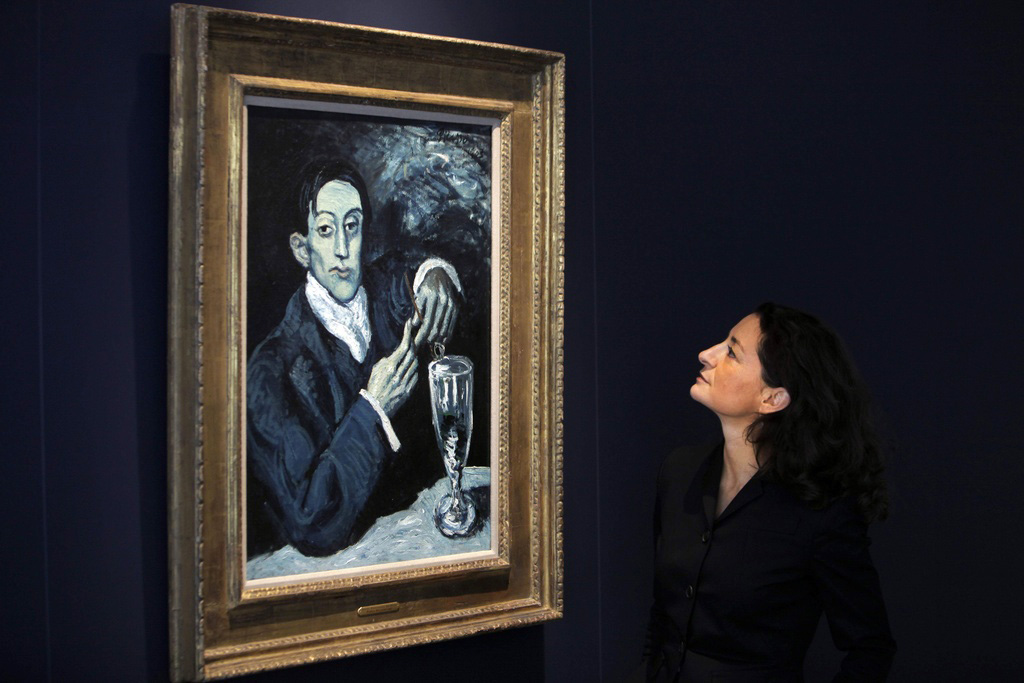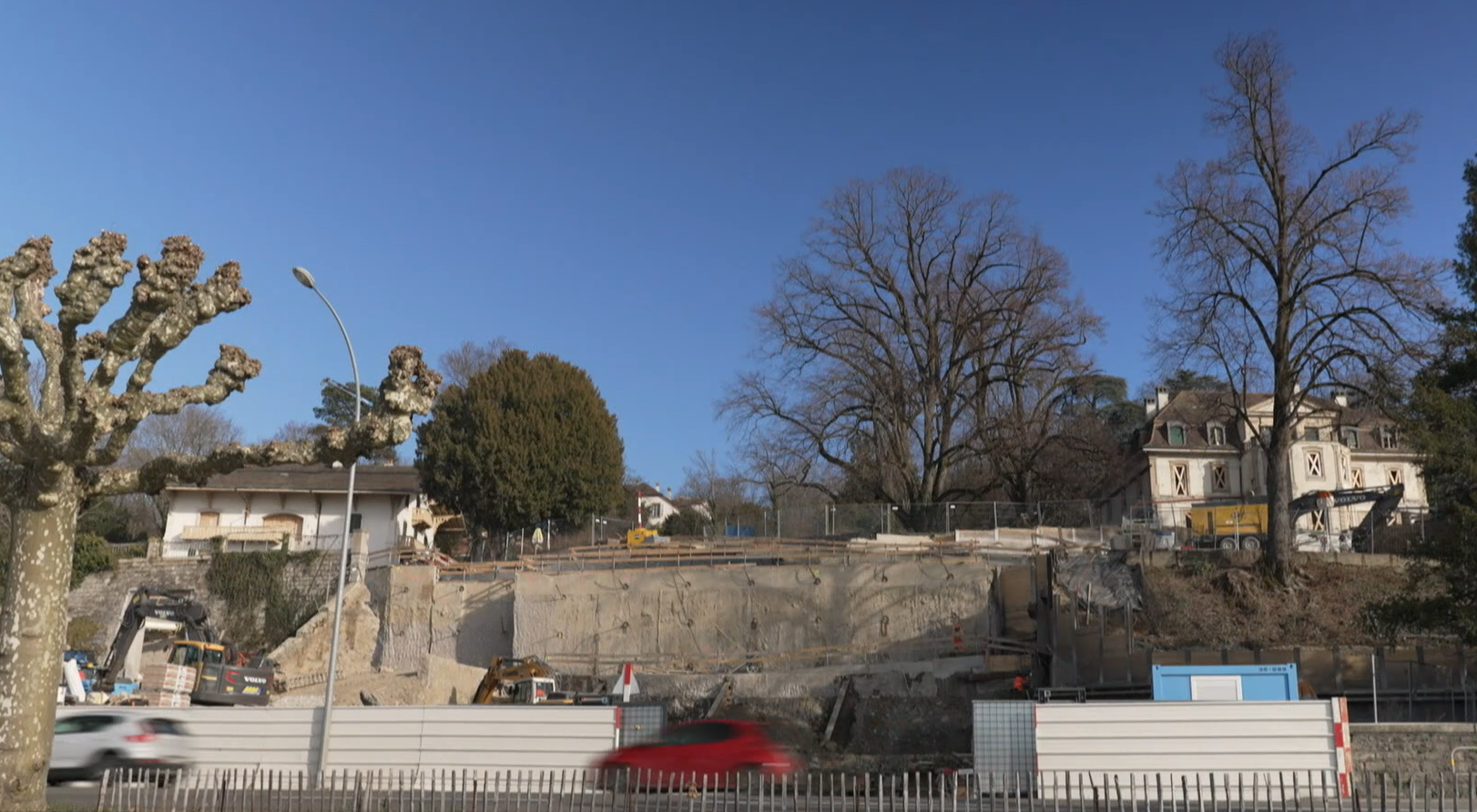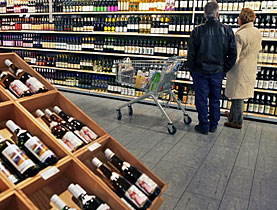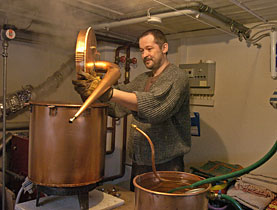Once banned absinthe retains mythical appeal

On October 7, 1910 absinthe, the legendary alcoholic spirit, was banned in Switzerland, ostensibly over fears it was damaging public health.
Now the drink is legal, the industry is moving to protect it by giving it a special label. But the economic crisis is starting to show its effects, especially in exports to the former boom country of the United States.
“There was a terrible crime in 1905, a vineyard worker who had drunk an awful lot of wine but also absinthe, killed his wife and children. So everyone thought it was absinthe’s fault and it was made the scapegoat,” historian François de Capitani told swissinfo.ch.
This mobilised opponents – some motivated by economic concerns – and in 1908 voters approved a ban on absinthe.
“There was an extraordinary coalition against absinthe made up of those who wanted temperance or abstinence on the one hand, and the winemakers and the central Swiss spirit makers, who mostly made Kirsch, and the breweries on the other,” de Capitani explained.
“The coalition had what you might call pseudo-medical arguments and absinthe was chosen as it was regarded as a drug, bohemian, and especially in Paris, as part of the intellectual milieu.”
This included painters and writers such as Picasso, van Gogh and Oscar Wilde.
Tonic and tipple
Absinthe – also known as the “Green Fairy”- originated in the Val-de-Travers near Neuchâtel in the 18th century. First considered a medicinal tonic, it later became an aperitif. It was also cheaper than other alcohols and became popular during hard economic times.
The drink was officially outlawed in Switzerland in October 1910. But this was not the end of the Green Fairy.
“The Val-de-Travers, which is approximately 15 kilometres long and five kilometres wide, continued to distil absinthe clandestinely until 2005 when production was legalised in Switzerland,” said Yves Kübler, the owner of Switzerland’s largest absinthe distillery Blackmint Distillerie Kübler & Wyss, which is situated in Môtiers in the region.
Absinthe, which contains wormwood, anise and fennel, is traditionally mixed with water, which turns it cloudy. There has been some dispute about the substance thujone, found in wormwood, which has been said to cause hallucinations.
De Capitani said that it couldn’t be proven that the drink was dangerous. “That’s why in the end they lifted the ban,” he said. Also it no longer made sense when absinthe was legal in some of Switzerland’s European trading partners.
Boom and bust
The lifting of the prohibition led to a boom for Kübler, who was instrumental in pushing for the change. He comes from a long line of absinthe distillers, as his great-grandfather started the family business in 1863.
However, the industry is suffering the effects of the economic crisis. In 2008, 824 hectolitres of absinthe were exported worldwide, but this had fallen to just 110 hectolitres last year, according to the Swiss Alcohol Board.
There had been a boom in the US, which had lifted its restrictions on the drink in 2007, as people rushed to try the previously forbidden.
“We haven’t exported since December 2008 to the US. Presently stock is being consumed there,” said Kübler, who is also the largest absinthe exporter to the US.
He is confident that the market for the product, which retails at $55 (SFr53), will pick up as the economy improves.
Status and protection
Meanwhile, Kübler and his colleagues at the Interprofessional Absinthe Association have submitted a request to the Swiss authorities to give absinthe a Protected Geographical Indication. This would mean that the terms absinthe, Green Fairy and La Bleue, (as it is also known in French), would be protected and could only come from Val-de-Travers.
The authorities are currently examining 42 instances of opposition to the request. No outcome is expected before next year.
Absinthe is now a luxury, regional niche product, says de Capitani. “It had more prestige when it was outlawed than now it’s legal,” he said.
But ban or no ban, there has always has been a fascination with the Green Fairy, says Kübler.
“Artists of the era, Picasso, van Gogh, Lautrec, Dali, everyone painted absinthe and was fascinated by it,” he said.
“I can’t tell you whether this different feeling in the mind when drinking absinthe – more inspiration or a more developed artistic sense – was real or imaginary, but the drink has something very mythical about it.”
Legend has it that absinthe was invented by a French doctor, Pierre Ordinaire, who settled in Couvet, a small village in western Switzerland.
Swiss voters chose to ban it in 1908 and it was officially outlawed on October 7, 1910.
Absinthe survived in its heartland, the Val-de-Travers, where up to an estimated 80 clandestine distillers continued to produce it over the years and local authorities turned a blind eye.
The ban on the sale and production of absinthe was lifted on March 1, 2005. New legislation also sets out under what conditions absinthe can now be produced.
In Switzerland legal absinthe must not contain more than 35 parts of thujone per million. In the US absinthe contains less than ten parts. According to researchers for the British Medical Journal, absinthe bottled before 1900 packed up to 260 parts per million of thujone.
595 hectolitres of absinthe were produced in Switzerland in 2009, down from 1,350 hectolitres in 2008, according to the Swiss Alcohol Board. 2005 saw 613 hectolitres produced.
The drink earned a reputation for being the tipple of choice of artists and writers.
Ernest Hemingway described absinthe as opaque, bitter, tongue numbing, brain-warming, stomach-warming, idea changing liquid alchemy in For Whom the Bell Tolls.
Poets Paul Verlaine and Arthur Rimbaud (who called the drink “beautiful madness”) enjoyed an absinthe, as did artists Vincent van Gogh and Henri de Toulouse-Lautrec (who claimed it helped them paint).
Oscar Wilde famously described the feeling of tulips growing from the floor and brushing his legs when he left a bar after drinking absinthe.

In compliance with the JTI standards
More: SWI swissinfo.ch certified by the Journalism Trust Initiative











You can find an overview of ongoing debates with our journalists here . Please join us!
If you want to start a conversation about a topic raised in this article or want to report factual errors, email us at english@swissinfo.ch.